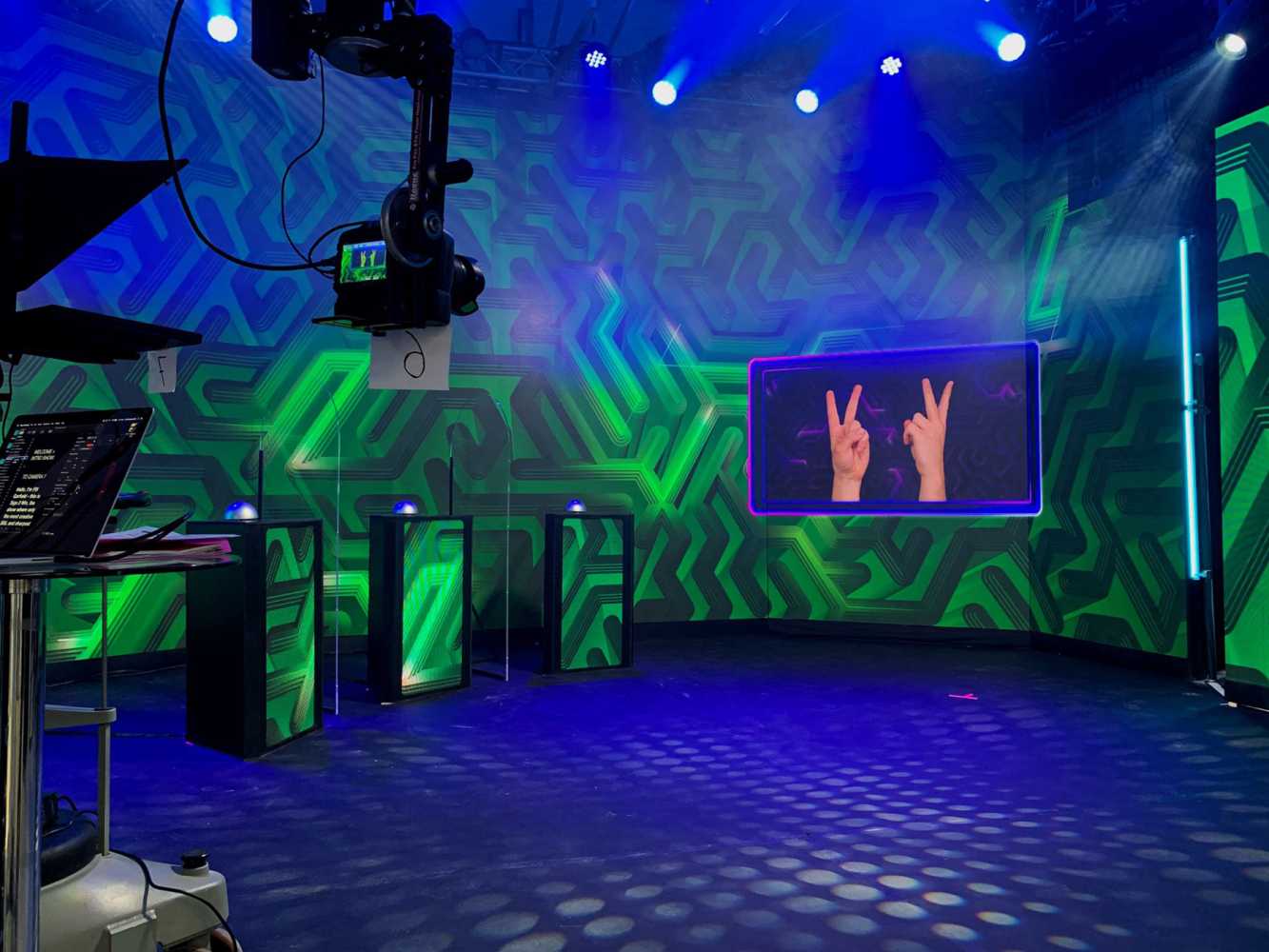Pytch and Chauvet create setting for Sign 2 Win
- Details

That all began to change in the 1970s, as schools throughout the UK incorporated BSL into their curriculums. By 2003, the British government had recognised BSL as its own language. On 28 March, this vibrant form of communication will reach another milestone with the debut of Sign 2 Win, the first game show played entirely in BSL.
Hosted by deaf actress Fifi Garfield of Switch and Punk Chef fame, the show offers contestants a chance to win £1,000 in prizes. The programme’s producer, Drummer TV, turned to Pytch for help in creating the first 10 episodes of their breakthrough series.
Pytch provided a virtual venue for the show, along with a complete range of production services, including a dynamic, camera-friendly lighting system that featured Chauvet Professional Rogue R2 Wash fixtures.
“The client contacted Pytch because they were seeking a studio for filming, as well as advice on what they could do at our venue,” said Chelsea Hopkins of Pytch. “This included things like pipped videos over LCD screens. We had a great team working together over five wonderful days.”
Lucy Payne, project manager at Pytch for the programme led the team in designing and fabricating the contestant podiums for the game show’s buzzers. The company also built the master cue sheet to be used for all episodes.
As for the show’s lighting, which was designed by Dan Giddings, lighting lead at Pytch, it endowed the set with vibrant colour combinations from the Rogue R2 Wash and par fixtures mounted overhead. Giddings often relied on bold primary colours, notably blues, reds, and greens to create an aura of excitement and anticipation. Sometimes splitting the set into two distinct colour patterns, he added visual variety to the program in addition to creating a sense of depth for the camera.
To texturize the set’s backdrop, Giddings used coloured light at varying intensities to accentuate different parts of the geometric patterns on its wall. By focusing light more intensely on one section of the backdrop rather than another one moment, then switching the next, he created a sense of movement.
The interplay of light and patterns was fittingly representative of the dynamic evolving nature of BSL, which is constantly expanding.















